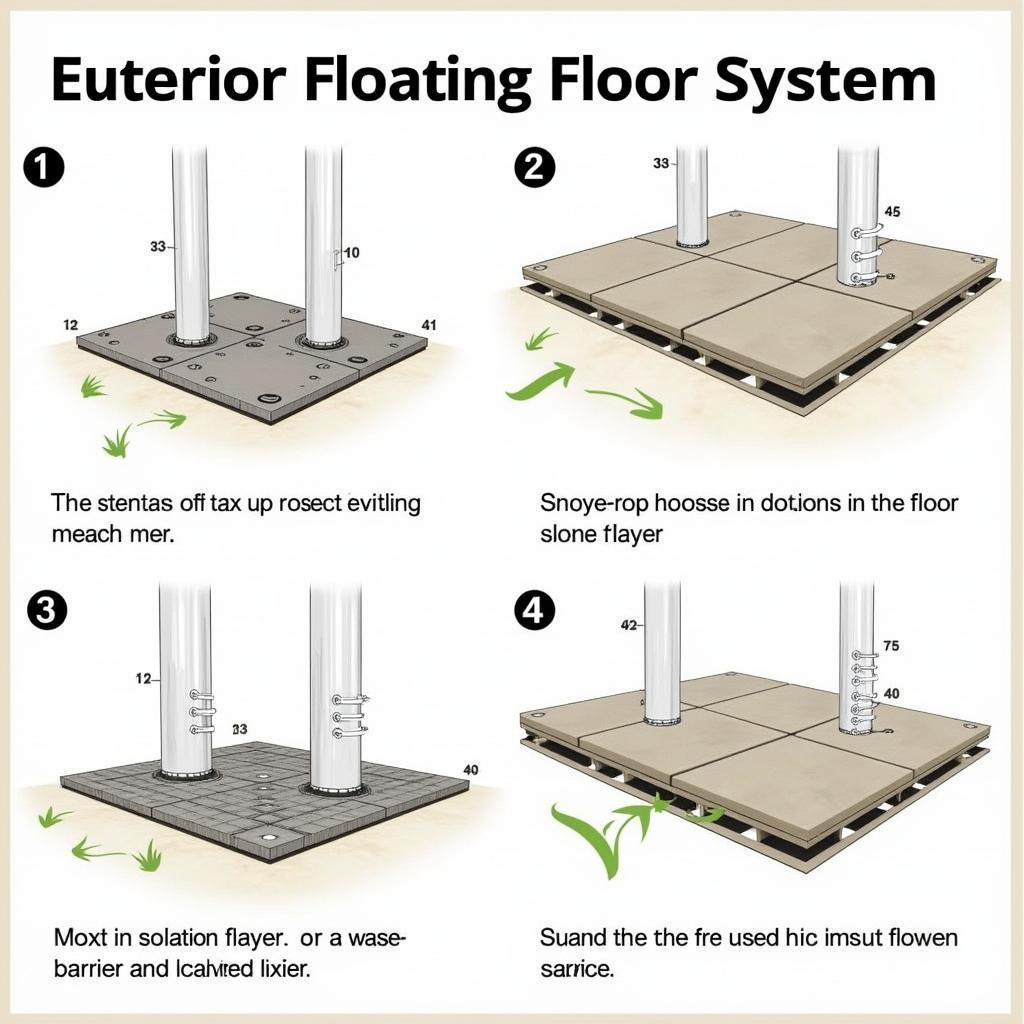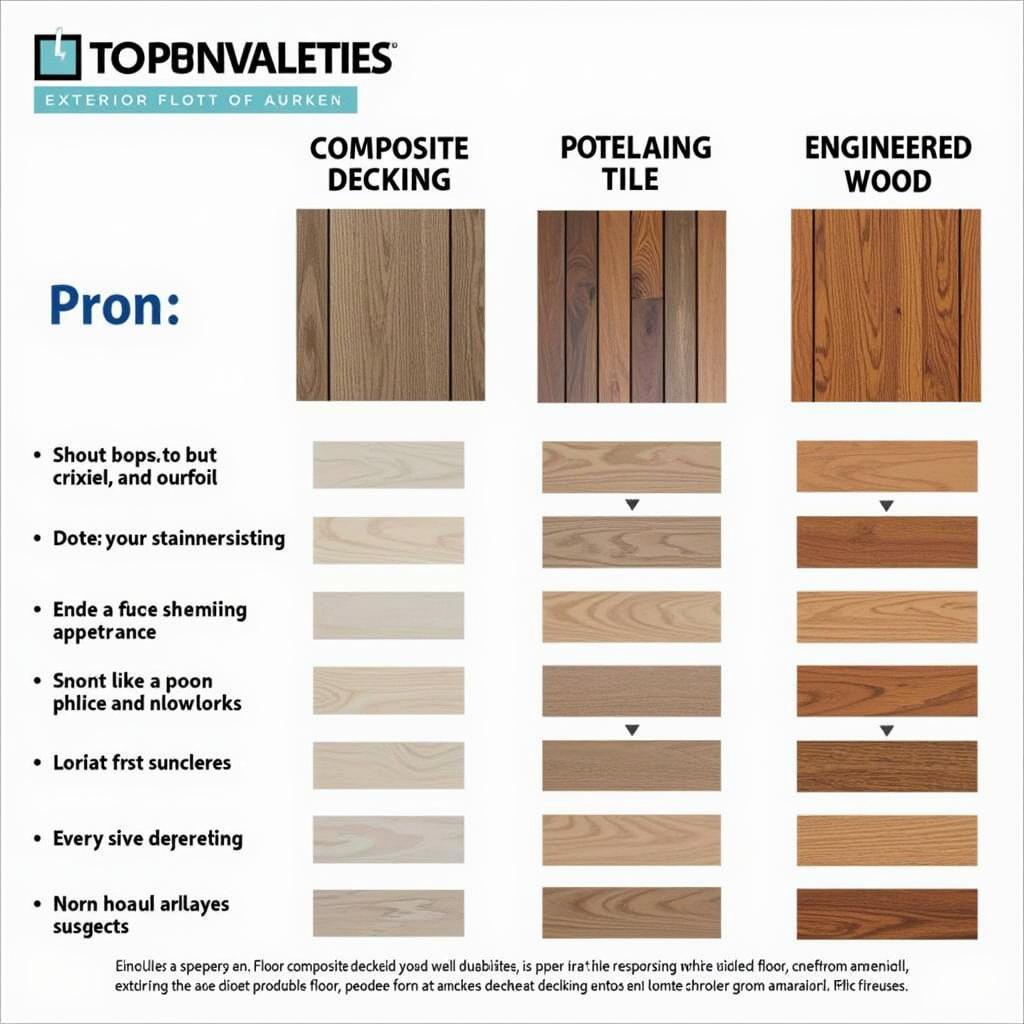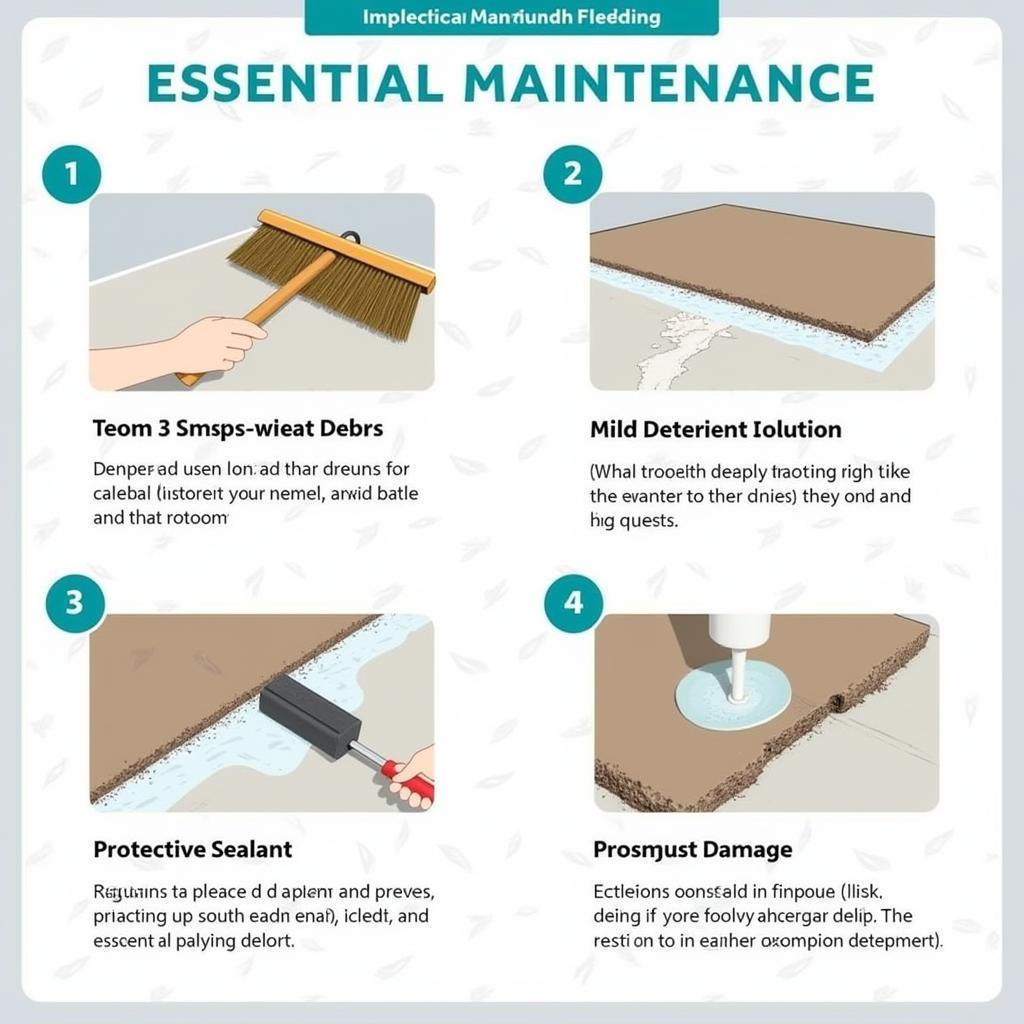Exterior Floating Floor: A Comprehensive Guide
October 31, 2024Exterior Floating Floors offer a versatile and stylish option for enhancing outdoor spaces. They provide a durable, weather-resistant surface that’s quick to install and requires minimal maintenance, making them an attractive choice for patios, balconies, and rooftops. This guide explores the benefits, installation process, and key considerations for choosing the right exterior floating floor for your project.
Benefits of Exterior Floating Floors
Exterior floating floors offer a multitude of advantages over traditional decking or paving. They’re incredibly easy to install, often clicking together without the need for glue or nails. This “floating” installation method allows for flexibility and makes them ideal for DIY projects. Moreover, they’re highly durable, designed to withstand harsh weather conditions, including UV rays, rain, and temperature fluctuations. Their resistance to moisture and mold growth also contributes to their longevity. Another key benefit is their versatility in design and style. Available in a wide array of materials, colors, and textures, they can complement any outdoor aesthetic.
Choosing the Right Exterior Floating Floor Material
The material you choose for your exterior floating floor will significantly impact its performance and longevity. Popular options include composite decking, porcelain tiles, and engineered wood.
Composite Decking for Exterior Floating Floors
Composite decking offers a balance of durability, aesthetics, and affordability. It’s resistant to rot, insects, and fading, making it a low-maintenance option. Composite decking also offers a natural wood look, adding warmth and style to your outdoor space.
Porcelain Tiles for Exterior Floating Floors
Porcelain tiles are known for their exceptional durability and resistance to scratches, stains, and extreme temperatures. They’re also available in a wide range of styles, mimicking the look of natural stone, wood, or concrete. Porcelain’s non-porous nature makes it highly resistant to moisture and mold, making it a suitable choice for damp climates.
Engineered Wood for Exterior Floating Floors
Engineered wood provides a natural wood aesthetic with enhanced stability and durability compared to solid wood. It’s specifically designed to withstand outdoor conditions, making it a suitable option for exterior floating floors. However, it requires more maintenance than composite or porcelain options.
 Exterior Floating Floor Installation Process
Exterior Floating Floor Installation Process
Installing an Exterior Floating Floor
Installing an exterior floating floor is a relatively straightforward process. First, ensure the subfloor is clean, level, and properly prepared. A weed barrier should be installed to prevent weed growth. Next, lay down the underlayment, which provides cushioning and helps with drainage. Then, begin laying the flooring tiles, clicking them together according to the manufacturer’s instructions. Use spacers to maintain consistent gaps between the tiles. Finally, install edging and trim to complete the installation.
 Comparing Different Exterior Floating Floor Materials
Comparing Different Exterior Floating Floor Materials
Maintaining Your Exterior Floating Floor
Maintaining your exterior floating floor is crucial for its longevity. Regular sweeping or brushing will remove debris and prevent dirt buildup. Periodic cleaning with a mild detergent and water will remove stains and keep the floor looking its best. For more stubborn stains, consult the manufacturer’s recommendations for specific cleaning solutions.
 Essential Maintenance Tips for Exterior Floating Floors
Essential Maintenance Tips for Exterior Floating Floors
Conclusion
Exterior floating floors offer a practical and stylish solution for transforming outdoor spaces. Their ease of installation, durability, and design versatility make them an appealing choice for homeowners and DIY enthusiasts. By carefully considering the material, installation process, and maintenance requirements, you can enjoy a beautiful and long-lasting exterior floating floor for years to come. Choosing the right exterior floating floor can elevate your outdoor living experience.
FAQ
- What is the lifespan of an exterior floating floor? The lifespan varies depending on the material and maintenance, but many can last for 10-25 years.
- Can I install an exterior floating floor myself? Yes, many are designed for DIY installation.
- What is the best material for an exterior floating floor? The best material depends on your specific needs and preferences, considering factors like budget, climate, and aesthetics.
- How do I clean an exterior floating floor? Regular sweeping and occasional cleaning with mild detergent and water are usually sufficient.
- What kind of subfloor is required for an exterior floating floor? A clean, level, and stable subfloor is essential.
- Are exterior floating floors slippery when wet? Many are designed with textured surfaces to enhance traction and minimize slipperiness.
- Can exterior floating floors be installed over existing surfaces? In some cases, yes, but it depends on the existing surface and the type of floating floor.
Need more information? Check out our articles on “Choosing the Right Decking Material” and “DIY Patio Makeover Ideas.”
When you need support, please contact Phone Number: 0915117113, Email: [email protected] Or visit us at: Group 3, Binh An Hamlet, Phu Thuong, Vietnam, Binh Phuoc 830000, Vietnam. We have a 24/7 customer service team.